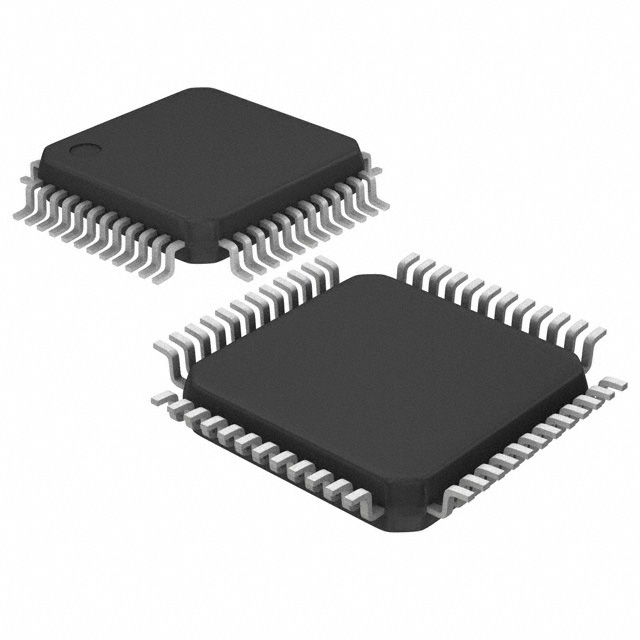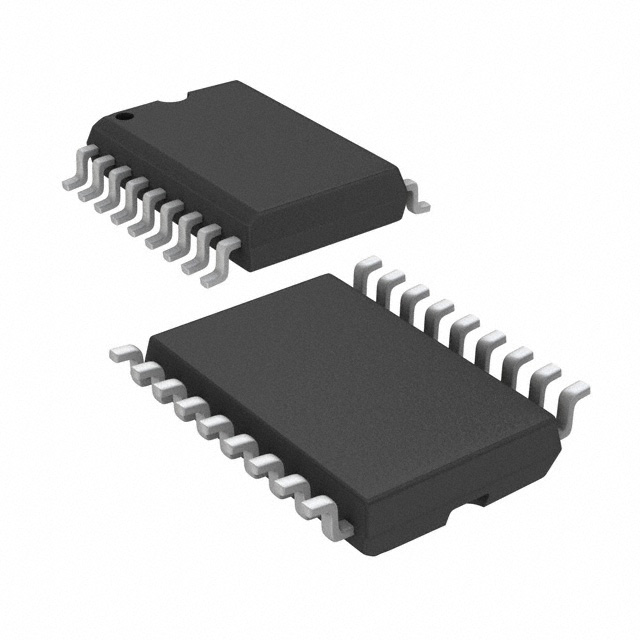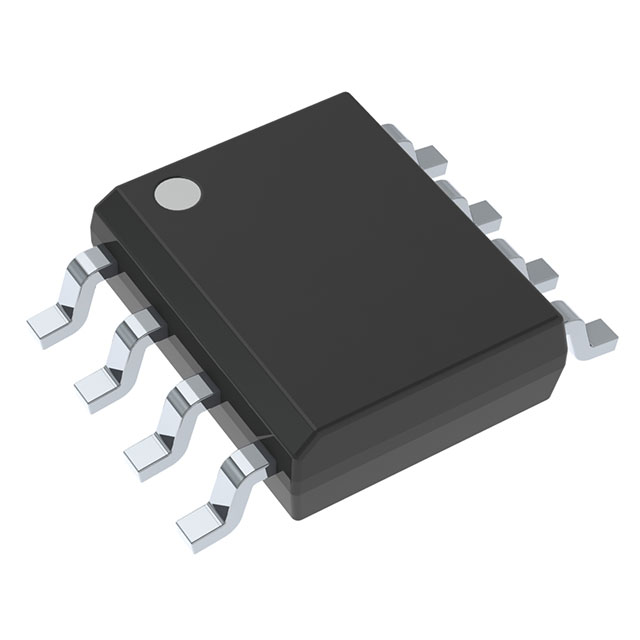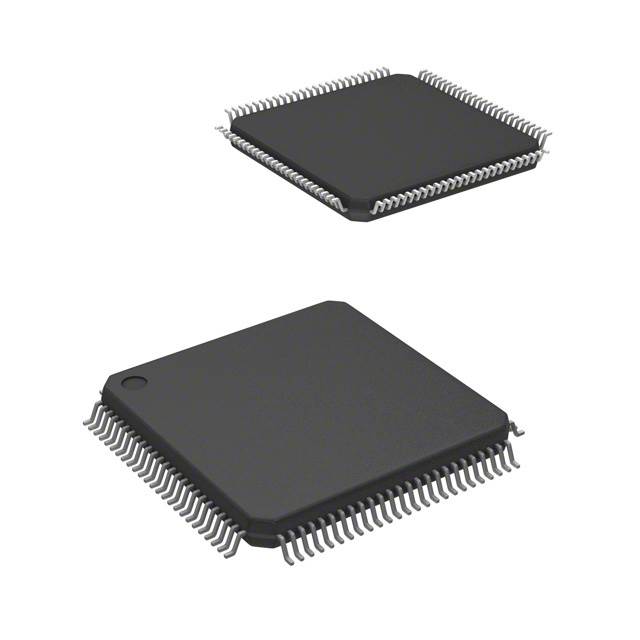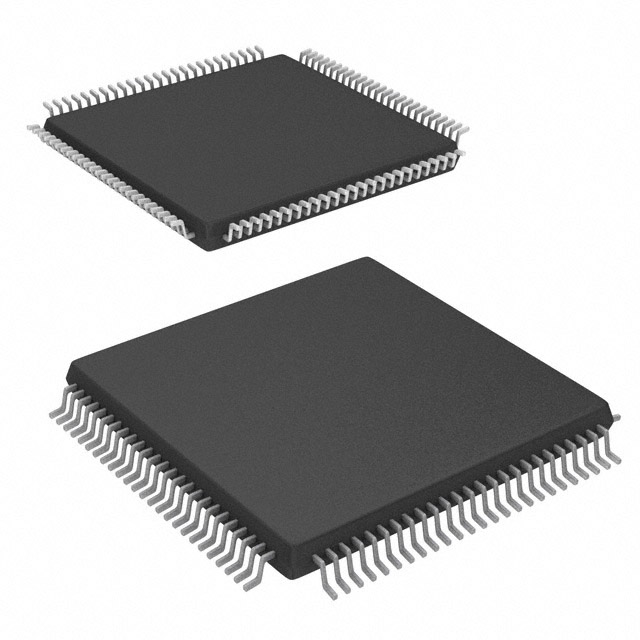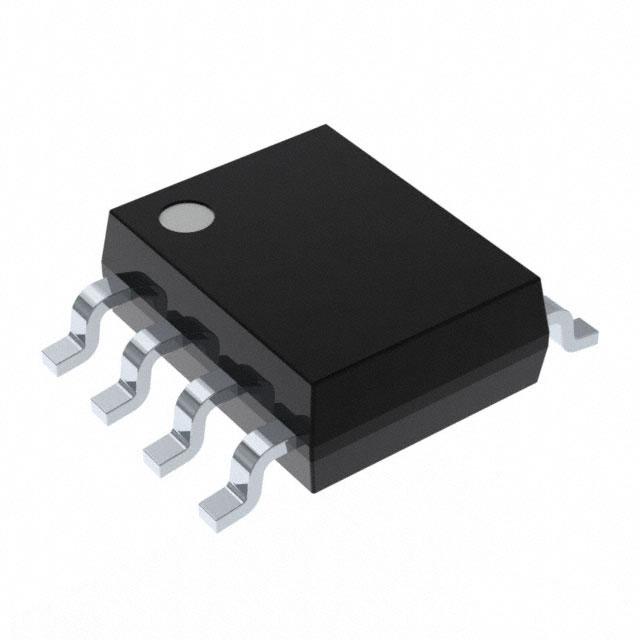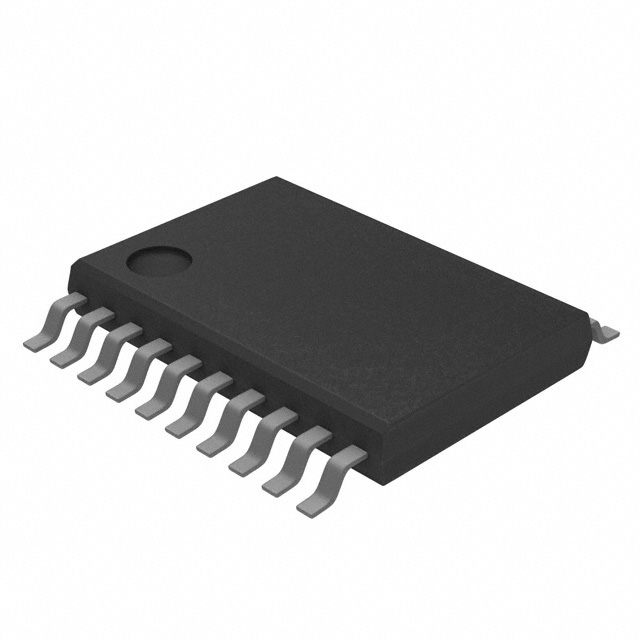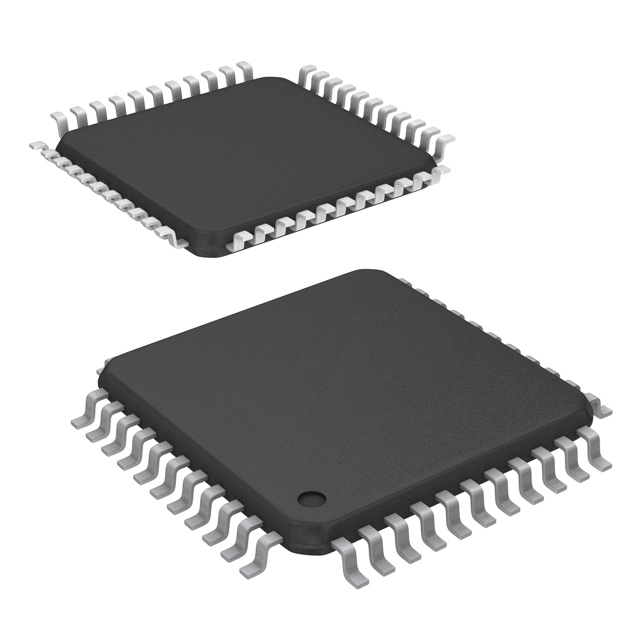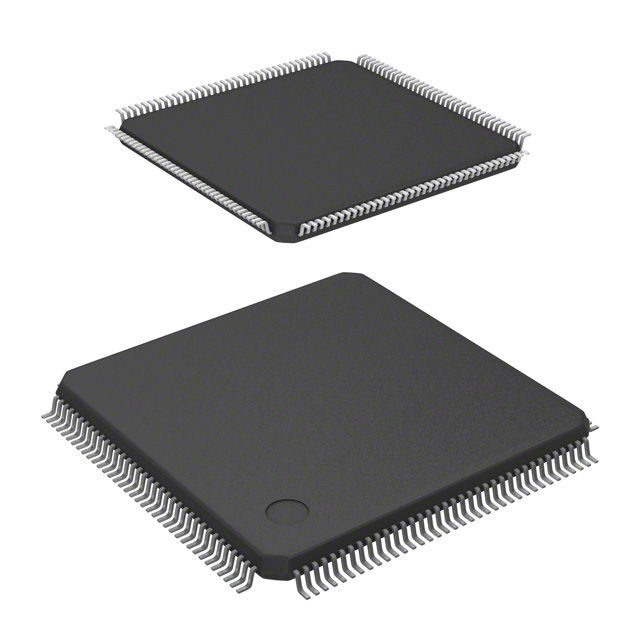

Learn About the Fire Fighting Robot Project
Catalog
How the Fire Fighting Robot Project WorksFire Fighting Robot Controlled Remotely via Android ApplicationRemote Operation via Android Smartphone or TabletRF-Based Fire Fighting RobotGSM-Based Fire Fighting RobotFrequently Ask QuestionsWith advancements in robotics, human intervention is becoming less necessary, and robots are increasingly being used for safety purposes. Fire accidents have become more common in our daily lives, and sometimes they lead to situations that make it difficult for firefighters to protect lives. In such cases, fire fighting robots are used to safeguard human life, property, and surroundings from the dangers of fire.
This fire fighting robot project is a cutting-edge project ideal for engineering students interested in robotics. The project features remote operation through RF technology and incorporates the 8051 microcontroller. The fire fighting robot can detect fires in a building, even when no one is present or when the occupants are asleep. By using this robot, lives and property can be protected from the destructive effects of fire.
How the Fire Fighting Robot Project Works
Fires can break out in many remote areas or industrial settings. For example, in garment warehouses, cotton mills, or fuel storage tanks, electrical faults can lead to devastating fires. In the worst cases, these fires can cause significant financial loss and even loss of life. Robotics offers an ideal solution to help protect people, property, and the environment.
A fire fighting robot is designed with an embedded system and is capable of navigating autonomously on a simulated floor while actively detecting flames. The robot can be used as a guide for firefighting equipment or, in emergency situations, as a first-response tool. The robot is specifically designed to locate a fire and extinguish it before it spreads beyond control.
This type of firefighting robot will eventually work alongside firefighters, greatly reducing the risk of injury and harm to humans. In addition, the Firefighting Robot Project aims to spark interest and innovation in the field of robotics, providing a practical solution to save lives and protect property.
Fire Fighting Robot Controlled Remotely via Android Application
The goal of this project is to design a fire fighting robot that can be operated remotely using an Android application. The robot is equipped with a water tank to pump and spray water onto fires, and it is controlled wirelessly. The system is powered by an 8051 microcontroller for precise control.
In this setup, the Android app sends commands from the transmitter (user) to the receiver (robot) to control its movements—forward, backward, and turning left or right. At the receiver end, two motors are connected to the 8051 microcontroller, with one set driving the robot's movement and the other controlling the robot's arm.
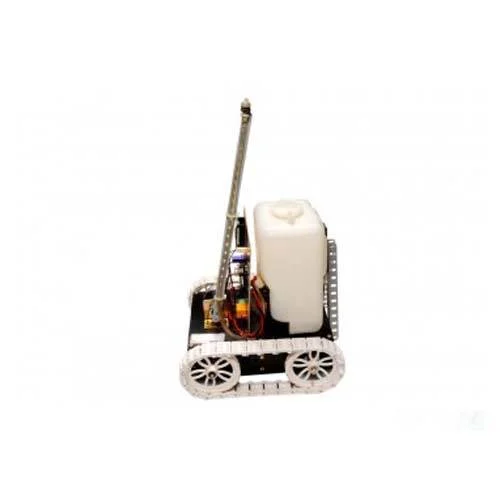
Fire Fighting Robot Remotely Operated by Android
Remote Operation via Android Smartphone or Tablet
The remote operation of the fire fighting robot is controlled using an Android smartphone or tablet. The Android device acts as a remote control, offering a reliable range for operation. The receiver is equipped with a Bluetooth module that connects to the microcontroller, which drives the DC motors through a motor driver IC for specific movements. Additionally, the robot is integrated with a wireless camera, allowing the operator to view the robot's actions on a display in real-time.
RF-Based Fire Fighting Robot
The primary objective of this project is to design a fire fighting robot that is controlled remotely using RF (Radio Frequency) technology. The robot is equipped with a water tanker and a pump, which are controlled via wireless communication to spray water. The 8051 microcontroller is used to manage the operation.
At the transmitter end, push buttons are used to send commands to the receiver, controlling the robot's movement in all directions: forward, backward, left, or right. The RF transmitter acts as a remote control with an effective range of up to 200 meters, provided it is paired with an appropriate antenna. The RF receiver decodes the signals before passing them to a second microcontroller, which drives the DC motors through a motor driver IC to carry out the required tasks.
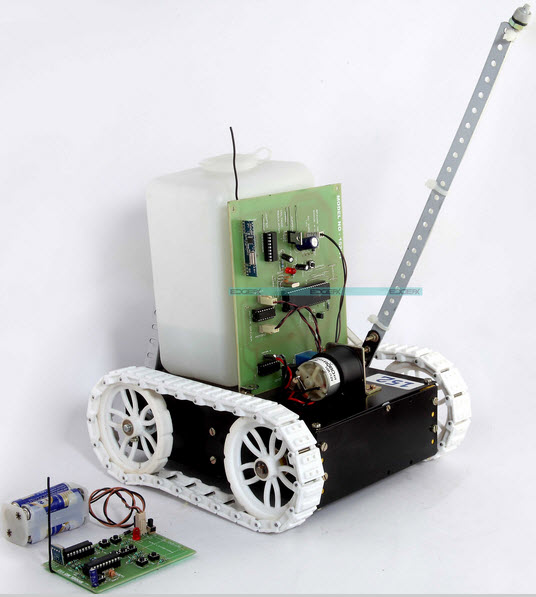
RF Based Fire Fighting Robotic Vehicle Project Kit
A water tank with a pump is mounted on the robot's body, and its operation is controlled by signals sent from the microcontroller at the transmitting end. The entire system is managed by the microcontroller. A motor driver IC is connected to the microcontroller, allowing it to control the motors that drive the robot's movement.
In the future, this project could be enhanced by integrating a wireless camera, enabling the operator to remotely monitor the robot's operation on a display.
GSM-Based Fire Fighting Robot
GSM modems have become essential tools for public communication, and this GSM-based fire fighting robot is designed to help prevent fires in homes, offices, and shops. The robot can navigate through smoke-filled environments in places like homes, offices, and shopping malls. It is equipped with IR sensors to detect fire and can extinguish it, even in the absence of people. Once the fire is controlled, the robot sends an immediate message to a designated person, alerting them to the situation.
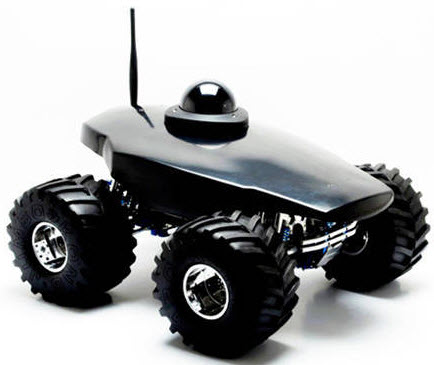
GSM based Fire Fighting Robot
This project is made more efficient by integrating SIM cards, allowing the robot to send SMS notifications to multiple devices and boards in the local area using Time Division Multiple Access (TDMA) techniques. These robots can be deployed in various settings, including factories, homes, offices, and more. By using the GSM-based fire fighting robot, everything can be controlled automatically through embedded systems. The application of embedded systems in communication has led to many exciting innovations that enhance safety and convenience.
This concludes our overview of the fire fighting robot that incorporates microcontroller, GSM, RF, and Android technologies. We hope this explanation has helped you better understand the concept behind this project.
Frequently Ask Questions
What is a fire fighting robot?
A fire fighting robot is an autonomous or remotely operated machine designed to detect and extinguish fires without needing human intervention. These robots are typically equipped with advanced sensors to detect heat or smoke and carry water, CO2, or other extinguishing agents to put out the flames.
What materials are used in a fire fighting robot?
A fire fighting robot typically consists of components like an Arduino UNO, flame and temperature sensors, a motor driver, motors, a servo motor, a water tank, a relay module, and a water pump. The power supply connects to the Arduino UNO and the motor driver.
How do you make a fire fighting drone?
Our fire fighting drone uses foam-cased PVC balls filled with dry chemical agents that can instantly extinguish a fire with a small blast. The drone delivers these fire extinguisher balls into the fire, and when the balls come into contact with the flames, they explode, releasing the extinguisher agents to put out the fire.
How do fire fighting robots handle stairs?
To understand how fire fighting robots tackle stairs, it’s important to know that they’re built with a sturdy, durable chassis—often using continuous tracks, like a tank, which enables them to navigate rough terrain, climb stairs, and move through debris without difficulty.
What is the future potential of fire fighting robots?
The future of fire fighting robots is incredibly promising, with potential applications ranging from urban fire stations to industrial sites and even wildland areas. This technology holds the promise of a future where firefighters no longer need to risk their lives in dangerous situations. The development of fire fighting robots is a perfect example of how innovation can address real-world needs.
What are the 5 main components of a robot?
In this post, we’ll look at the five essential parts of a robot: the end effector, robot arm, actuators, sensors, and controller. Each of these components plays a crucial role in how a robot functions, interacts with its environment, and performs specific tasks with precision.
What’s the best DIY robot for beginners?
Our top pick for beginners is the Makeblock mBot. It’s an easy-to-use robotics kit that’s perfect for beginners, featuring commonly used industrial robot parts and clear, step-by-step 3D instructions to guide you through the building process.
Subscribe to JMBom Electronics !



